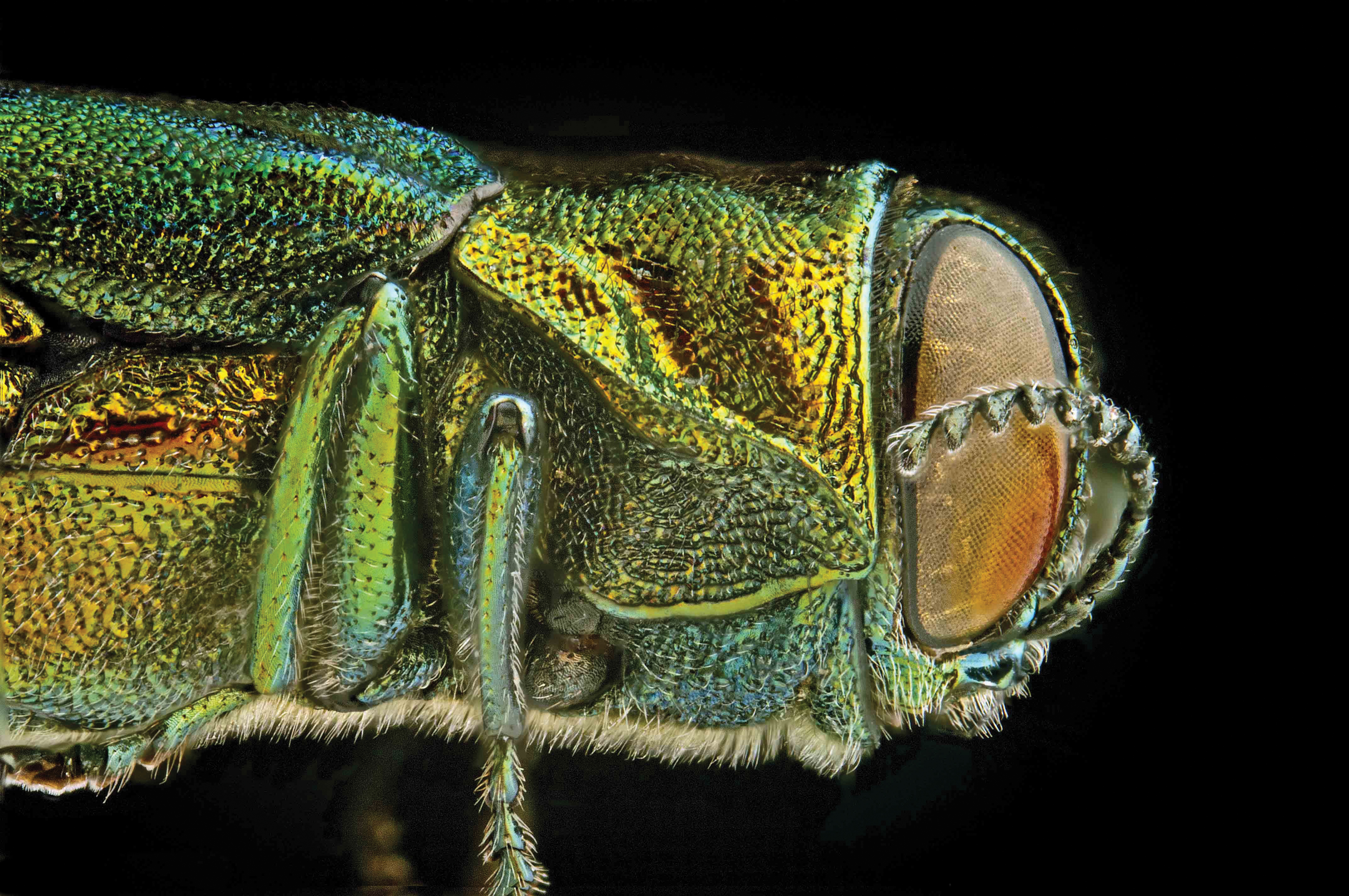When is the discovery of a single insect enough to quarantine a county and instill a sense of dread in local officials? When it's the emerald ash borer, an invasive species of beetle that has wreaked havoc on ash trees in the northern United States for more than a decade.
And now it's here.
The emerald ash borer, or EAB, was discovered in June near the East Chattanooga Recreation Center, and several others have been found since then in the immediate area. Officials think the beetles jumped train at a nearby railroad yard, but as Chattanooga city forester Gene Hyde explains, "This is a story with many elements and a lot of moving parts."
Do Your Part
Buy local firewood for use in Chattanooga, and don't transport firewood of any species from county to county unless it's been treated.Property owners who are concerned about their ash trees may want to begin treating them with a non-restricted insecticide like Transtect.
The story begins in 2002 in Detroit, where it's believed the first EABs arrived in packing crates with goods from China. "It was one of these perfect storms," says Hyde. "These folks up north, their percentage of ash trees in the forests is 15-20 percent, much higher than down here, and the EABs had no predators."
The females lay eggs in ash trees, and the resulting larvae tunnel around in the wood, disrupting the nutrient flow. The trees are dead within a year. "Their numbers just soared and they spread," he says. "They will kill every ash tree they come in contact with."
Since their arrival in Michigan, the EABs have spread to another 18 states and are now working their way south.
"The spread is predominately through transportation of firewood from quarantined areas," Hyde says. "So in order to stop this spread, every time it's found in a new county, they slap a quarantine on the county. No untreated ash products can be moved from or through the county."
Hamilton County was placed under state quarantine July 1. Chattanooga and county officials are still working out the ramifications, including how to safely transport mulch to other counties-a revenue source for the city.
Currently, entomologists in Michigan are working on a population control program involving wasps from China that are natural predators of the EAB.
For more information on how to identify and report emerald ash borers and protect your trees, visit emeraldashborer.info.
"Obviously, they've got to be careful that the solution isn't worse than the original problem, but hopefully at some point that may play into the overall scheme for population control," says Hyde. For now, local officials plan to start treating area trees next spring with an insecticide like Transtect, which provides protection for about a year.
The good news for Chattanooga is that, like most of Tennessee, its ash trees are few and far apart enough (about 1 percent of the city's canopy) to make EABs' spread and destruction slower than it's been in the Northeast. But this means respecting the quarantine guidelines is even more critical in the fight for our ash trees.
"If it follows suit with how it's working in every other population, the population of EABs will be low for three to five years and then it'll reach critical mass and huge numbers of ash trees will die," Hyde says. "But time will tell."

